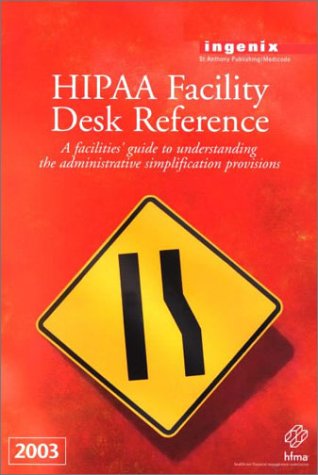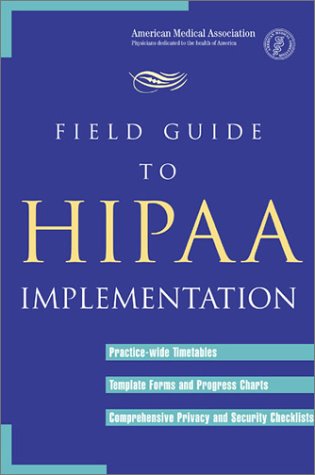These are the top 10 essential HIPAA books for IT managers to read. Each of these popular titles was rated most highly useful by the cutomers at Amazon.
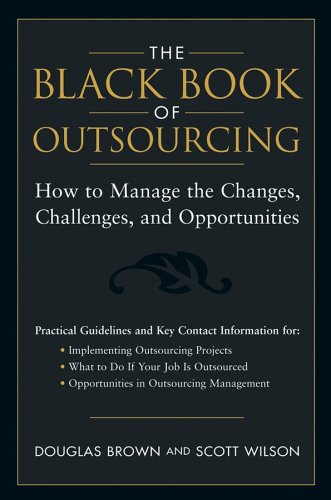
Amazon.com’s description of this book:
The Black Book of Outsourcing is a comprehensive guide and directory for the emerging field of outsourcing, including expert advice on how to operate an outsourcing program, how to deal with the political aspects of outsourcing, and how to find a career in outsourcing. A controversial and emotional subject among business leaders and workers in the global business community, outsourcing is fast becoming one of the greatest organizational and industrial shifts in modern history. In this one-of-a-kind resource, outsourcing gurus Douglas Brown and Scott Wilson chart a course for business leaders charged with managing outsourcing initiatives and present a wealth of employment opportunities for workers who want to enter this growing field.
Read the reviews of this book and purchase at Amazon.com

Amazon.com’s description of this book:
With the rapid deployment of wireless networks in business environments, IT professionals must implement security mechanisms that are equivalent to those existing today for wire-based networks. This volume is an authoritative, clearly-presented guide to key foundation topics and technology frameworks for designing and maintaining secure, reliable operations. From basic concepts to designing principles to deployment, all critical concepts and phases are explained in detail. The book also includes coverage of wireless security testing techniques and intrusion prevention techniques.
Through extensive hands-on examples, Guide to Wireless Network Security demonstrates how to install, configure and troubleshoot firewalls and wireless network security applications; evaluate, implement and manage wireless secure remote access technologies; and deploy a variety of Virtual Private Networks, intrusion detection systems and intrusion prevention systems, in conjunction with information warfare countermeasures.
Read the reviews of this book and purchase at Amazon.com

Amazon.com’s description of this book:
This book is about database security and auditing. You will learn many methods and techniques that will be helpful in securing, monitoring and auditing database environments. It covers diverse topics that include all aspects of database security and auditing – including network security for databases, authentication and authorization issues, links and replication, database Trojans, etc. You will also learn of vulnerabilities and attacks that exist within various database environments or that have been used to attack databases (and that have since been fixed). These will often be explained to an internals level. There are many sections which outline the anatomy of an attack before delving into the details of how to combat such an attack. Equally important, you will learn about the database auditing landscape both from a business and regulatory requirements perspective as well as from a technical implementation perspective.
- Useful to the database administrator and/or security administrator – regardless of the precise database vendor (or vendors) that you are using within your organization.
- Has a large number of examples – examples that pertain to Oracle, SQL Server, DB2, Sybase and even MySQL.
- Many of the techniques you will see in this book will never be described in a manual or a book that is devoted to a certain database product.
- Addressing complex issues must take into account more than just the database and focusing on capabilities that are provided only by the database vendor is not always enough. This book offers a broader view of the database environment – which is not dependent on the database platform – a view that is important to ensure good database security.
Read the reviews of this book and purchase at Amazon.com

Amazon.com’s description of this book:
HIPAA is very complex. So are the privacy and security initiatives that must occur to reach and maintain HIPAA compliance. Organizations need a quick, concise reference in order to meet HIPAA requirements and maintain ongoing compliance. The Practical Guide to HIPAA Privacy and Security Compliance is a one-stop resource for real-world HIPAA privacy and security advice that you can immediately apply to your organization’s unique situation. This how-to reference explains what HIPAA is about, what it requires, and what you can do to achieve and maintain compliance. It describes the HIPAA Privacy and Security Rules and compliance tasks in easy-to-understand language, focusing not on technical jargon, but on what you need to do to meet requirements. IT managers, CIOs, consultants, security professionals, office managers, physicians and anyone else preparing an organization for HIPAA will receive expert guidance on requirements and other commonly-discussed topics. Everyone will be affected by HIPAA; this book enables you to determine how HIPAA will impact you regardless of whether your business or organization is a HIPAA Covered Entity.
Read the reviews of this book and purchase at Amazon.com

Amazon.com’s description of this book:
- Outlines cost-effective, bottom-line solutions that show how companies can protect transactions over the Internet using PKI
- First book to explain how PKI (Public Key Infrastructure) is used by companies to comply with the HIPAA (Health Insurance Portability and Accountability Act) rules mandated by the U.S. Department of Labor, Health, and Human Services
- Illustrates how to use PKI for important business solutions with the help of detailed case studies in health care, financial, government, and consumer industries
Read the reviews of this book and purchase at Amazon.com

Amazon.com’s description of this book:
This fifth edition of the classic text, Strategic Management of Health Care Organizations, introduces strategic thinking, strategic planning, and strategic momentum to advanced undergraduate and graduate students as well as practitioners in the field of health care. It demonstrates how strategic managers can become strategic thinkers with the crucial skills to evaluate the changing environment, analyze data, question assumptions, and develop new ideas.
Swayne, Duncan, and Ginter present methods to develop and document a plan of action through strategic planning and illustrate how, as managers attempt to carry out the strategic plan, they evaluate its success, learn more about what works, and incorporate new strategic thinking into future planning, strategy formulation, and situational analysis. They demonstrate how strategic management “maps ” can provide the direction needed for successful implementation.
In this new edition, all chapters have been revised and contain new or updated Introductory Incidents and Perspectives. Appendix A has been revised to match the new model of strategic thinking, planning, and managing the strategic momentum. Twenty real-life case studies, including nine new cases and three updated classics, present diverse strategic situations in an accessible manner that enhances the applicability of the concepts for students and professionals.
The text is supported by PowerPoint slides and an Instructors ‘ Manual.
Read the reviews of this book and purchase at Amazon.com

Amazon.com’s description of this book:
Robert Lawton Burns focuses on the key role of the ‘producers’ as the main source of innovation in this wide-ranging analysis of business trends in the manufacturing branch of the health care industry. Written by industry academics and executives, the book provides a detailed overview of the pharmaceutical, biotechnology, genomics/proteomics, medical device and information technology sectors. Most importantly, it describes the growing convergence between these sectors and the need for executives in one sector to increasingly draw upon trends in the others.
Read the reviews of this book and purchase at Amazon.com
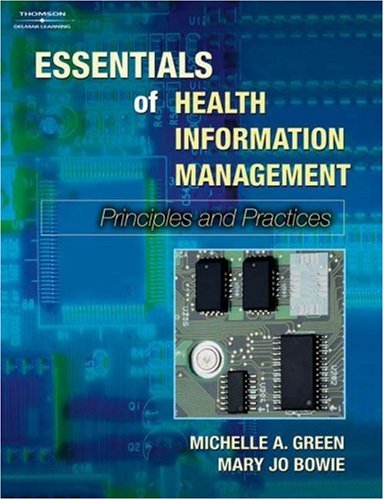
Amazon.com’s description of this book:
A comprehensive resource for the academic and professional learner, this book presents both theoretical and practical applications throughout. The authors’ dynamic and unique approach to health information management targets students who respond to hands-on and visual learning. The book has been written for the first-semester learner; however it can be a useful resource for various health care organizations and medical offices.
Read the reviews of this book and purchase at Amazon.com

Amazon.com’s description of this book:
This new edition of Financial Management of Health Care Organizations offers an introduction to the most-used tools and techniques of health care financial management, including health care accounting and financial statements; managing cash, billings and collections; making major capital investments; determining cost and using cost information in decision-making; budgeting and performance measurement; and pricing.
Avoiding complicated formulas and using numerous spreadsheet examples, its pedagogy includes: more advanced information in chapter appendices for those who want to go beyond the basics; a detailed outline beginning each chapter; a summary concluding each chapter; and ‘perspectives’, real-world situations and events which illustrate concepts discussed in the chapters. Now completely updated, this book provides students with the practical, up-to-date tools they need to succeed in this dynamic field.
New to the Second Edition:
- Key terms and key equations listed at the end of each chapter; each set of key terms now becomes the first question for each chapter
- Expanded use of marginal definitions and key pointsAdditional questions and problems for the chapters; where possible, problems are provided in pairs so that the first can be used as an example, and the second can become part of an assignment
- Updated perspectives throughout the text
- Instructor’s Manual available on CD-ROM including all exhibits in PowerPoint and Excel, answers to all problems in PowerPoint and Excel, and working spreadsheet models of exhibits and selected problems for classroom use
Read the reviews of this book and purchase at Amazon.com
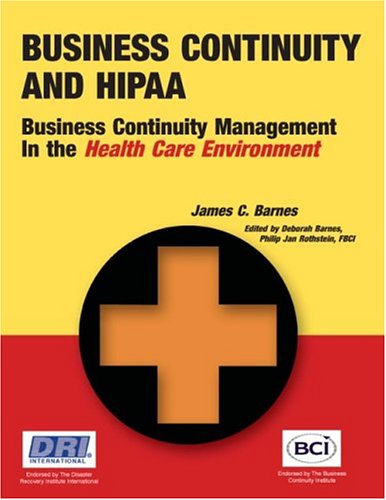
Amazon.com’s description of this book:
This book examines business continuity planning as adapted to encompass the requirements of The Health Care Portability and Accountability Act of 1996, or HIPAA. We examine the typical business continuity planning model and highlight how the special requirements of HIPAA have shifted the emphasis. The layout of this book was designed to afford assistance, hints, and templates to the person charged with the task of implementing business continuity planning into a healthcare organization.
Read the reviews of this book and purchase at Amazon.com
Any we missed?
Do you have any suggestions of books to add to this list? Leave a comment below!



